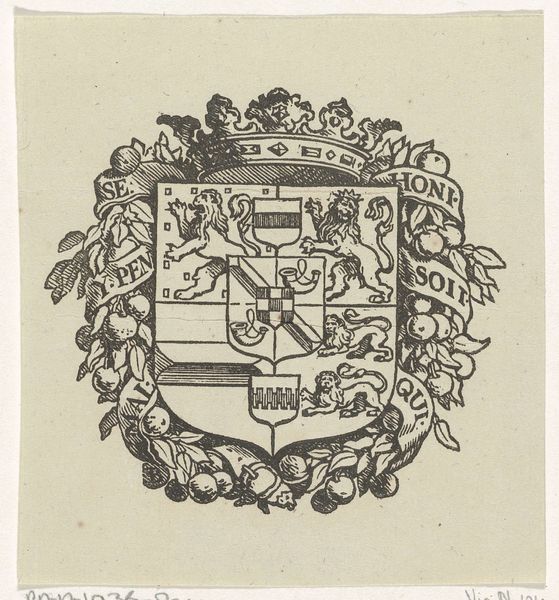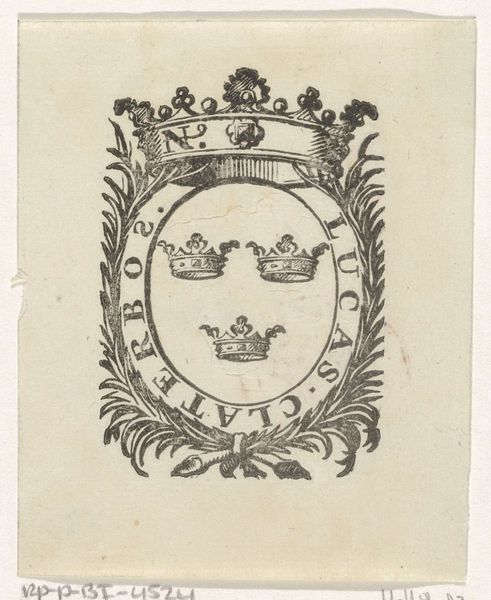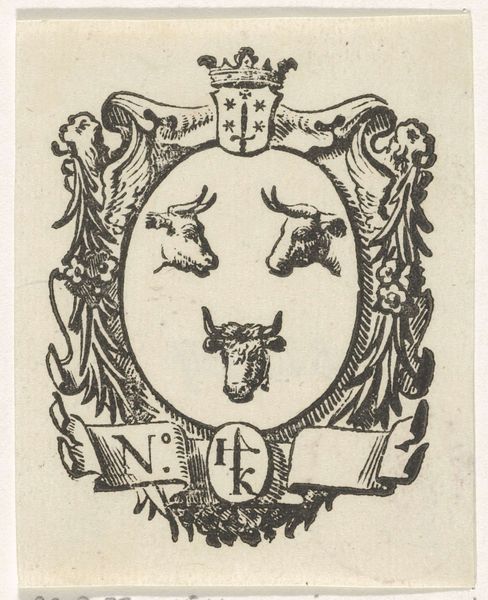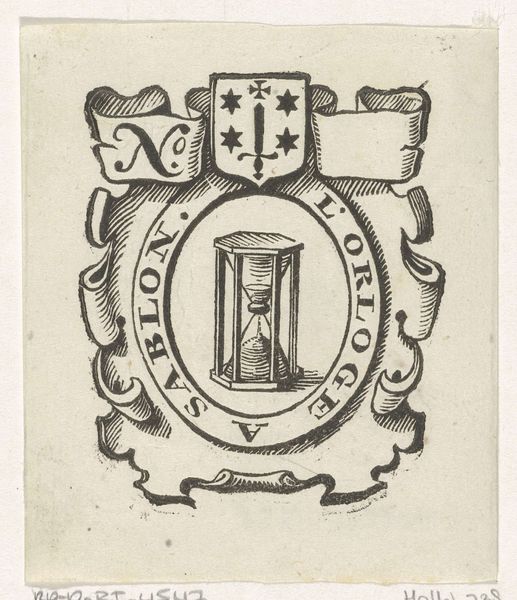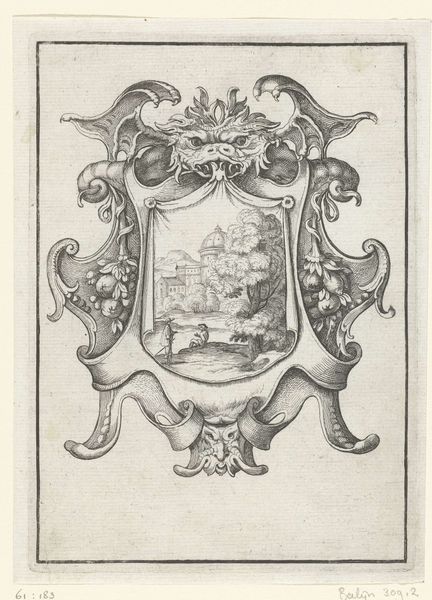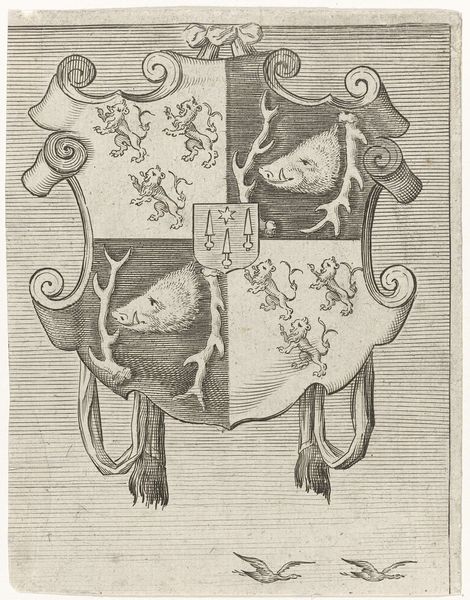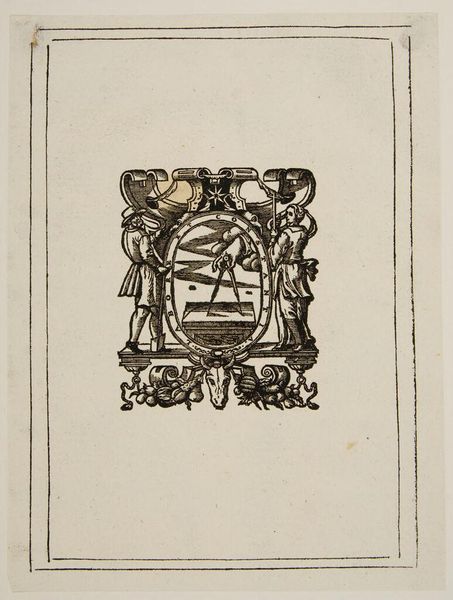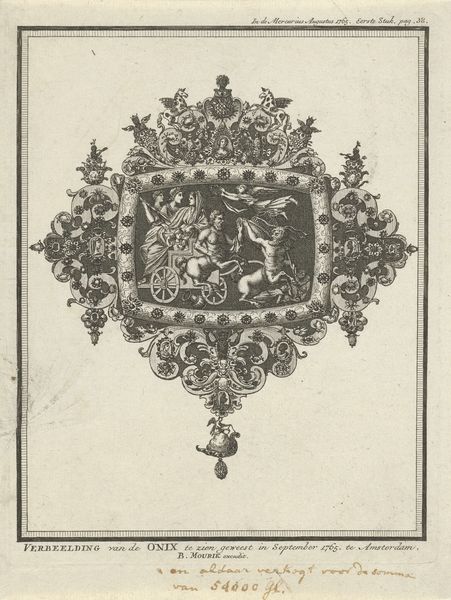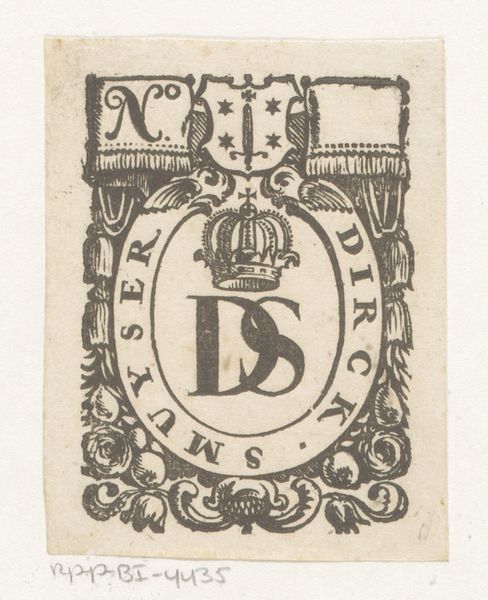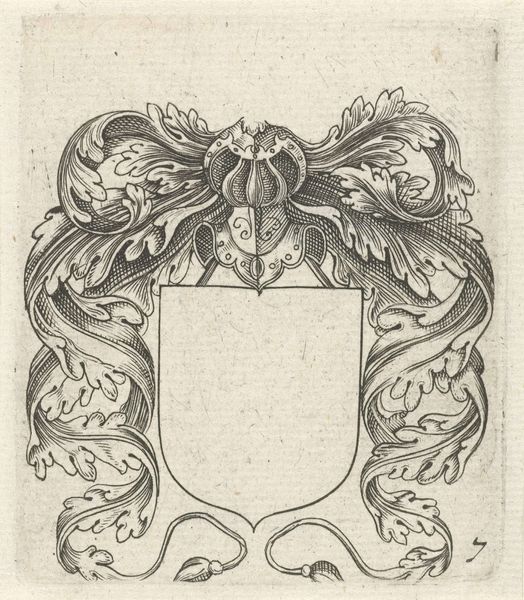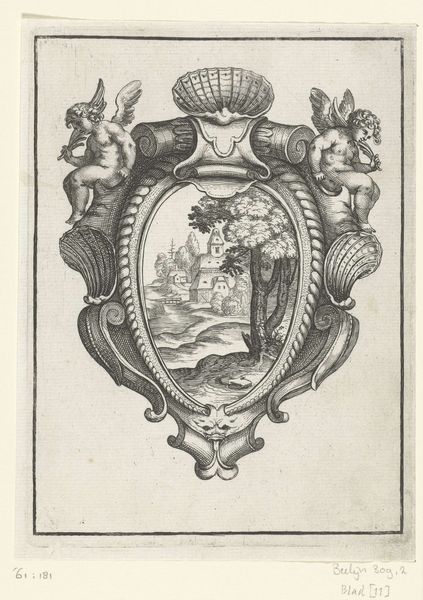
drawing, graphic-art, print, ink, engraving
#
drawing
#
graphic-art
#
pen drawing
# print
#
pen illustration
#
pen sketch
#
old engraving style
#
personal sketchbook
#
ink
#
ink drawing experimentation
#
pen-ink sketch
#
pen work
#
sketchbook drawing
#
sketchbook art
#
engraving
Dimensions: height 98 mm, width 79 mm
Copyright: Rijks Museum: Open Domain
Curator: Here we have a Handelsetiket van Nicholas Staphorst, an engraving created between 1681 and 1740 by Isaac Vincentsz. van der Vinne. The central image is a rather stately looking chair. What's your initial impression? Editor: Intrigued. It's so formal, but also a bit absurd. A coat of arms...for furniture? There's a peculiar rigidity in the line work. And that chair...it looks almost throne-like, a funny little monument. Curator: The technique here is key. As an engraving, this piece involves a meticulous process of cutting lines into a metal plate. The density and direction of those lines create form, shadow, and texture. Notice how the fruits, foliage and even the ribbon seem to cradle the central image. Editor: The textures really catch my eye too – the almost scratchy feel of the shading juxtaposed against the smooth ribbon banner is neat. Makes you wonder about the labor behind it, doesn’t it? All that focused etching... almost meditative. What kind of social role would such a print fulfill? Curator: Precisely! The act of commissioning an engraved label, especially one featuring a family's goods and name, speaks volumes. It suggests not only a need for branding, but also access to specific networks of artisan producers. The label transforms mundane trade objects into vessels carrying layers of cultural significance. Editor: A personalized label. Like early modern product placement! Thinking about that, I can't help but see the chair almost as a character. This silent, dignified object, made precious. Do you get the feeling of elevating the mundane into something meaningful? Curator: It’s a complex interplay. Objects gaining social recognition not merely for their material value, but what they symbolized. Think about class structures, networks of exchange. Editor: It changes the entire experience, doesn’t it? It takes us away, thinking about social stature, the labor required, and maybe, just maybe, it leads you back to appreciating the art itself a little differently. Curator: Absolutely. It’s about the transformation through labor.
Comments
No comments
Be the first to comment and join the conversation on the ultimate creative platform.
